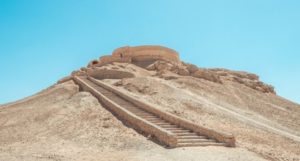
Ever wonder about your roots? Tried to trace your ancestry? Your roots connect you with a larger whole. Finding those connections can give you a profound sense of “belonging.”
My research for writing biblical fiction includes deep dives into roots. For example, one of my main characters speaks eight languages, including Elamite, an ancient language that linguists are still struggling to decipher. Elamite is extraordinary because it has no known relatives. Think about that. The ramifications are enormous.
No common root
Did you know that linguists cannot trace language origins back to one common root? They can identify languages from about 4,000 years ago—then they hit a wall. All they can conclude is that multiple languages appeared independently at the same time. With completely different constructions and typographies.
Sumerian used cuneiform. Egyptian used hieroglyphics. Symbols in both systems could represent whole words or parts of words (sounds or syllables). Chinese used symbols that exclusively represented whole words. But Elamite used something closer to what we’d consider a modern-day alphabet.
Elam was located in what would eventually become part of Persia (think modern-day Iran)—yet no version of the Persian language bears any resemblance to Elamite. The two languages don’t share a common root.
Are the Elamites mentioned in the Bible? Yes! Twice in Genesis, three times in Isaiah, twice in Ezra, and once in the book of Acts. How cool is that?
So … what does multiple languages appearing independently at the same time remind you of in the Bible? You got it: the Genesis 11 account of the Tower of Babel.
Biblical confirmation of our roots
When I read about individual languages or language families that can’t be traced to a common source, I get really excited. It’s another proof that even the oldest parts of the Bible contain reliable historical records.
Although many languages have become extinct, approximately seven thousand languages still exist. About a third of those are endangered, meaning only a handful of people still speak that language. Elamite is an extinct language, but learning about it can tell us about mankind’s roots. For help with that, let’s turn to Genesis 10, known as the Table of Nations. It outlines where Noah’s sons and their descendants settled.
- Japheth’s descendants settled in India and Europe.
Correspondingly, there’s a superfamily of Indo-European languages. - Ham’s sons settled in parts of Africa (southern Egypt, Sudan, northern Ethiopia) as well as Arabia, Mesopotamia, the Persian Gulf, and Canaan (the land that God gave to the Israelites).
Correspondingly, there’s a superfamily of Afro-Asiatic languages. - Shem’s sons settled in Babylonia and Assyria.
Shem’s descendants spoke Semitic languages (Hebrew, Aramaic, Arabic, Phoenician) … and that “outlier” language, Elamite!
There’s more. One of Shem’s descendants was Eber (from which the word “Hebrew” came). One of Eber’s sons was Peleg—a derivative of the verb palag, which means “to split or divide.” Many scholars believe Peleg’s name reflects Genesis 10:25 “when the earth was divided”—that is, when God confused everyone’s language at the Tower of Babel so they would scatter throughout the earth as He’d commanded Noah and his family to do. If Peleg’s name indicates when the earth was “divided,” then the start of different languages occurred five generations after the Flood.
Pretty cool, eh?
What our roots tell us
Learning about language origins not only affirms the accuracy of God’s Word but also underscores the biblical fact that we’re all part of one race—the human race. Paul reminded the Athenians of this when he spoke on Mars Hill: “From one man He [God] made every nation of men, that they should inhabit the whole earth; and He determined their appointed times and the boundaries of their lands.” (Acts 17:26-27, BSB)
May we live that truth each day!
Father God, thank You for how archaeology continues to corroborate the Bible. Long ago, out of love and judgment, You divided people. Today we needlessly do that to ourselves. Each day seems to bring more division and strife in churches and countries. Yet, amid the mess, You remind us that You alone are the Creator. You made everyone. We all are part of one race—the human race. Forgive us for losing our regard for that truth. Show us how to shine Your light so everyone will learn the truth of Your creation and Your intentions for us. May it be a stepping stone to restoring unity to this broken world. Amen.
Never miss a post!
********************





It is fascinating to see you trace the roots of language! Thanks for doing such enormous research, and condensing it to share with us.
I pray others will be as blessed as I was in researching and writing this blog!